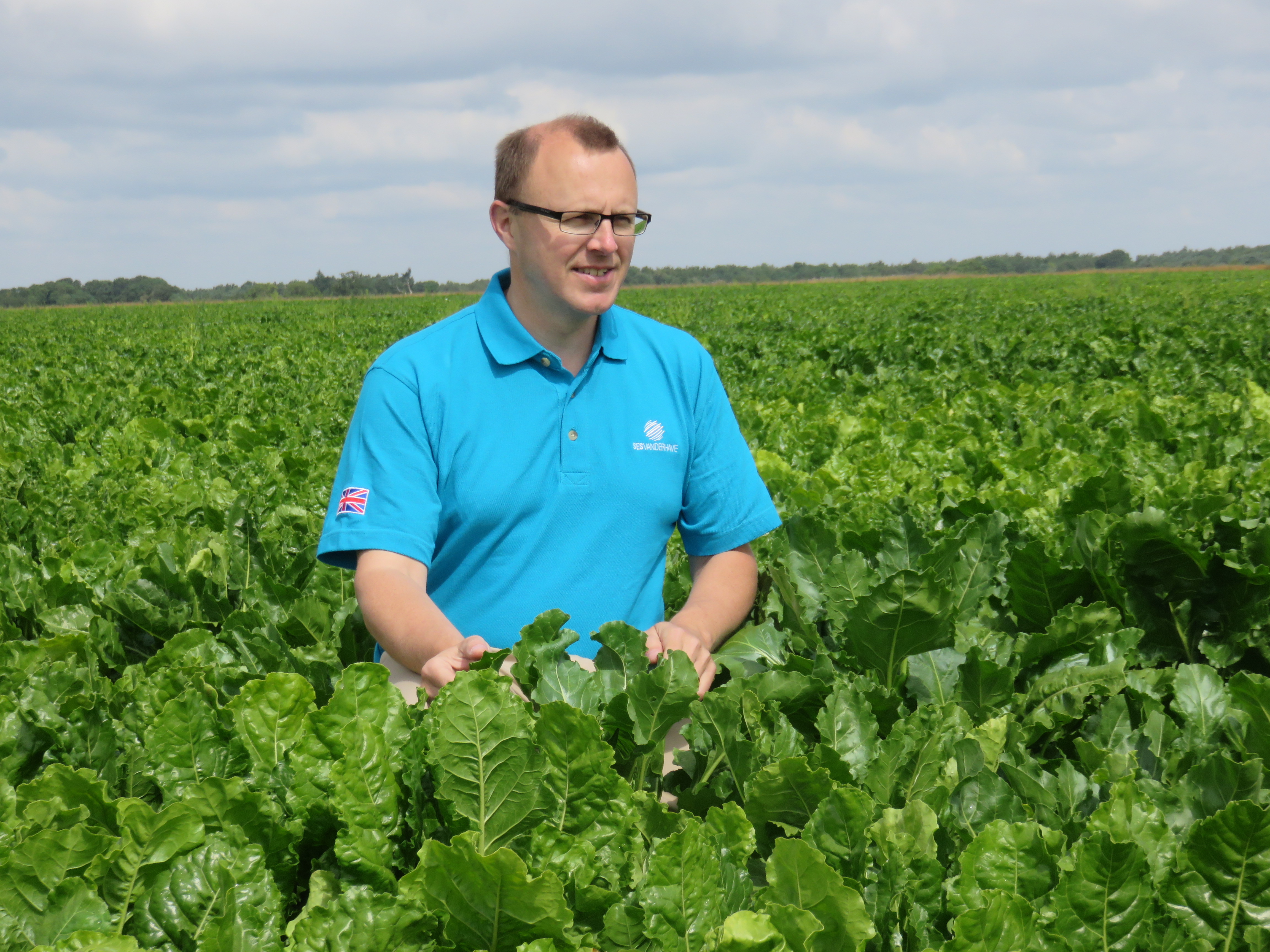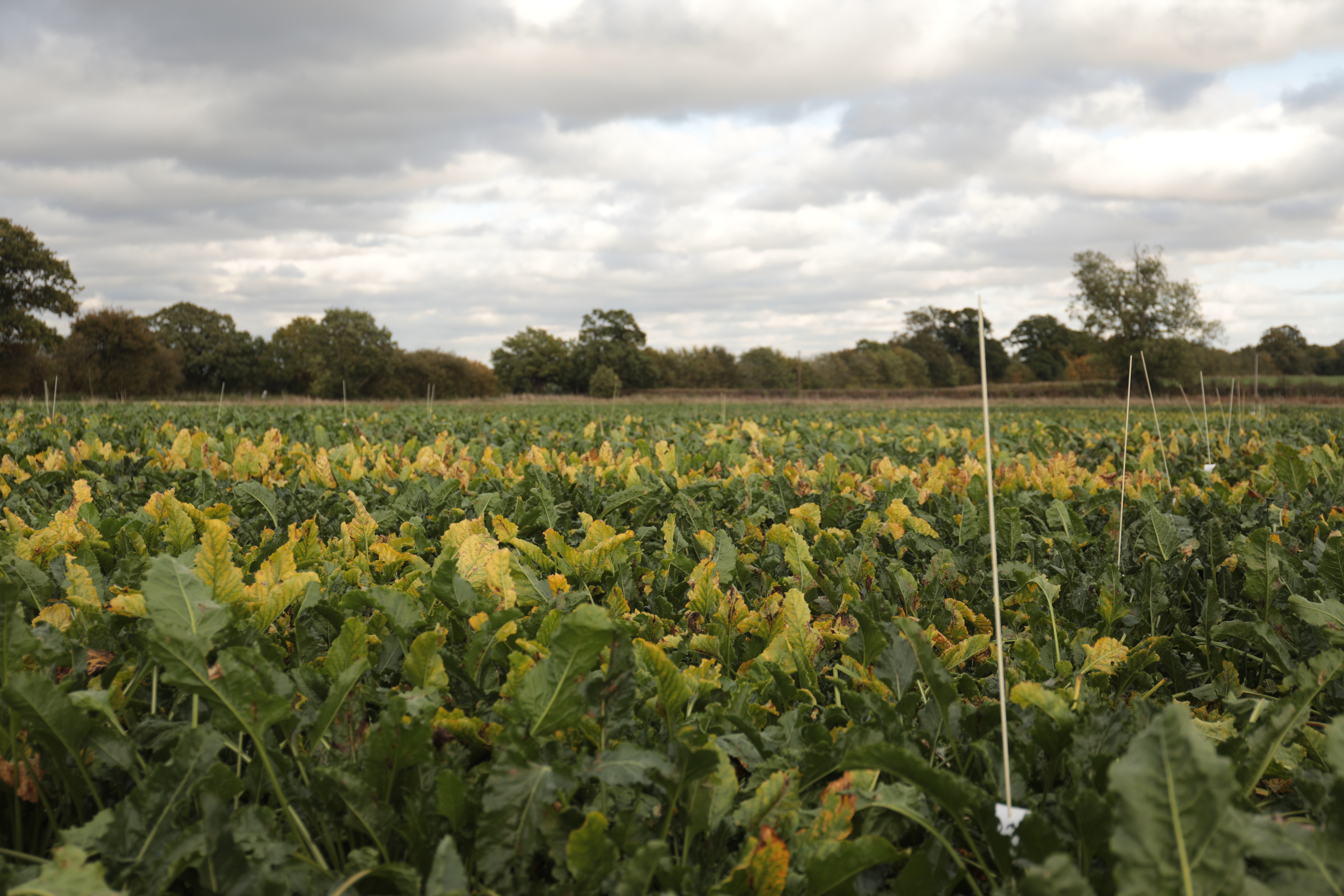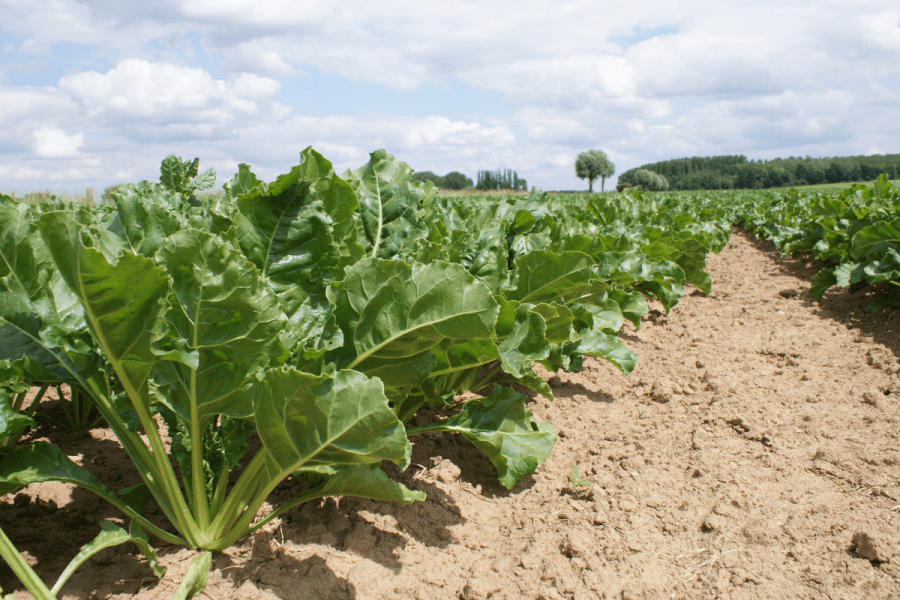At least in the short-term, things are looking up for the sugar beet crop. CPM finds out how a plant breeder views its resilience in the future.
To minimise risk, it’s more important to look for tried and tested varieties.
By Lucy de la Pasture
The recent announcement of a new base price for sugar beet crops of £40/tonne will help restore confidence amongst growers who over the past few years have begun to question the long-term future of the crop.
However, an improved price is only part of an overall package of risk management for growers and optimising returns will require attention to a range of issues including variety choice, agronomy options and the benefits of keeping sugar beet in the rotation, according to Ian Munnery, UK director of specialist sugar beet breeder SESVanderhave.

One of the challenges that affects English growers more than their counterparts elsewhere in Europe is the vagaries of a maritime climate, says Ian Munnery.
“While the yields of many combinable crops have been stagnant for a decade or more, sugar beet yields have improved year after year. The output commonly achieved is at a level that growers wouldn’t have dreamed of about a generation ago. This progress is in large measure due to advances made by plant breeders.”
For many farmers in the sugar beet growing areas of England, the crop has a number of advantages. It fits well into the rotations of farms in the East Midlands and East of England. It provides a break crop that allows weed and disease cycles to be broken and spreads the demand for labour.
It’s also important to note that the crop is a ‘banker’ crop. Growers can be certain that they will be paid, which may be an increasing benefit if forecasts of squeezed margins and cash flow across the arable sector are realised, reckons Ian.
“One of the challenges that affects English growers more than their counterparts elsewhere in Europe is the vagaries of a maritime climate,” he says. “No two seasons are the same. UK seed is sown earlier than on the continent and harvest is later – this offers a unique set of advantages and challenges for UK growers.
“This year, for instance, we saw most of the area sown into dust-dry seedbeds leading to slow emergence. In other years we’ve seen sodden soil conditions delay drilling or near zero temperatures slow establishment down,” he says.
“Similarly, summer conditions will vary and pose different threats to the crop. In 2020 crop emergence was slow leading to widespread virus yellows. This year the aphid-borne virus has posed far less threat to yield, in part due to the use of neonicotinoids. However, with record temperatures in July, many will wonder if we should be thinking about heat tolerant varieties to mirror those varieties currently grown in Egypt and Turkey.”
It begs the question, how do you manage the risk of seasonal variations? “Farmers know their land and should plan rotations to spread risk across soil types and topography. Sheltered fields reduce the risk of frost, as do those with southern aspects. Early sowing, where and when possible, will be an increasingly important tactic,” believes Ian.

There’s a focus on breeding virus yellows tolerance but Ian isn’t of the view that there will ever be a ‘silver bullet’ variety that has all the possible traits stacked within it.
Similarly, variety selection has an important part to play – with a range of varieties to spread the risk of what any season may bring. Ian’s advice to growers is to begin that selection by reviewing how varieties and seed lots have performed on their own fields in past years with primed and pelleted seed.
Then focus on ones that have proved successful and ensure you get the crop off to a good start. Drilling date, seed priming, seed lots and treatments will all play a critical role in emergence. “After all, a gappy crop is an unhappy crop – limiting yields at the outset and storing up problems for later as it impacts weed control, bolting, uneven root and top,” he says.
There’s a place for trying out new varieties on a small proportion of the area, but few new varieties have seen commercial performance at scale in the UK. Ian believes the promises from a few kilos in the BBRO/BSPB Recommended List should be proven at scale with commercial seed across the growing area.
“Yield advances in any single year are quite small. On top of that, site variation and year to year variation make the statistical difference very challenging given the relatively small acreage of the national crop. To minimise risk, it’s more important to look for tried and tested varieties, especially ones that have performed locally.
“When it takes 10 years to develop a variety and a further three years to multiply up the seed, it’s illogical that some varieties only last one season on the RL,” says Ian.
He says that the firm has a long track record of providing dependable varieties – like Bullfinch, Cayman and Stingray – largely due to its own extensive commercial trials within the UK. “These have led to the popular and established variety Wren, which is now offered alongside the newer varieties Adder and Tawny for sowing in 2024. These come from a stable that has seen some varieties remaining growers’ favourites for a good few seasons.”
Before being commercialised, the company’s varieties will have been trialled in all the UK sugar beet areas for a decade. This will include testing commercial seed primed in-house and commercially grown across a wide range of soil types and different growing seasons, he adds.
“The varieties are also trialled by commercial growers and their approval of performance is an important factor in helping the company decide which varieties to launch.”
Ian views seed treatments and processing as playing a part in risk management. “Derogations for neonicotinoid treatments may help but cannot be depended on as restrictions are likely to become stricter,” he says.
He sees early drilling with primed seed as an important part of good agronomy. “Getting plants away early towards maturity is as important as chemical protection. It’s the route to optimising the yield potential of Britain’s maritime climate.”
Gaining mature plant resistance as soon as possible leads to a range of other benefits. It improves root development that will help in dry seasons, it enhances the crop’s ability to cope with the threats of pests and disease, he adds. “And a healthy, fit plant will optimise its yield potential. All these benefits stem from good quality seed that has been professionally processed.”
Few would dispute the good breeding has always been important for the sugar beet crop. Ian believes that the continued investment in research being made offers growers even better risk management over the coming years.
“We have world class research facilities and scientists working on a wide range of traits for the future. Our global role means that we gain early warning of changing pest and disease threats as well as access to potential genetic solutions in the UK.
“The work includes addressing the challenges of drought, increasingly saline soils and agronomy with reduced inputs, especially fertiliser as input prices soar. Single traits are very much a lucky dip when we don’t know what will be thrown at varieties after they’re sown, so it’s important to breed for broader robust traits to ensure durability of each variety,” he says.
“However, I don’t envisage there will ever be a ‘silver bullet’ variety that has all the possible traits stacked within it. Risk management will remain an essential part of the grower’s skillset. Understanding what issues a particular farm or area is likely to face will remain critical for the foreseeable future.”
Educating the next generation
The education programme, Grow Your Own Potatoes (GYOP), is set to continue thanks to Andrew Skea, managing director at Potato House. His aim is to ensure that the scheme benefits the different sectors of the potato industry by cultivating the consumer of the future.
Since the project was launched in 2004, it has reached over six million primary school children with positive messages about potatoes, many of whom will now be responsible for shopping for their own children. At its peak, GYOP was present in around three quarters of all primary schools across Great Britain.
Andrew is now looking for industry members to help him drive the project forward; this may be through funding, or supplying seed potatoes for the schools to grow, to growers visiting schools to talk about food and farming, and the benefits of including potatoes in a healthy, balanced diet. “Now more than ever GYOP needs industry’s help to work together to keep this essential programme running,” he believes.
Sue Lawton, project manager at GYOP says: “We have consistently delivered positive results in educating the next generation of consumers. Investing in the consumers of tomorrow will help future-proof the potato industry.
“We have an ideal opportunity to put potatoes front and centre. With more consumers turning to plant-based diets, we have to work together to remind children and their parents that potatoes are a versatile, low-cost source of nutrition.”
To get involved with GYOP and join together to support the future demand for potatoes, please contact Sue for more information on sue@potatohouse.co.uk.
This article was taken from the latest issue of CPM. For more articles like this, subscribe here.




